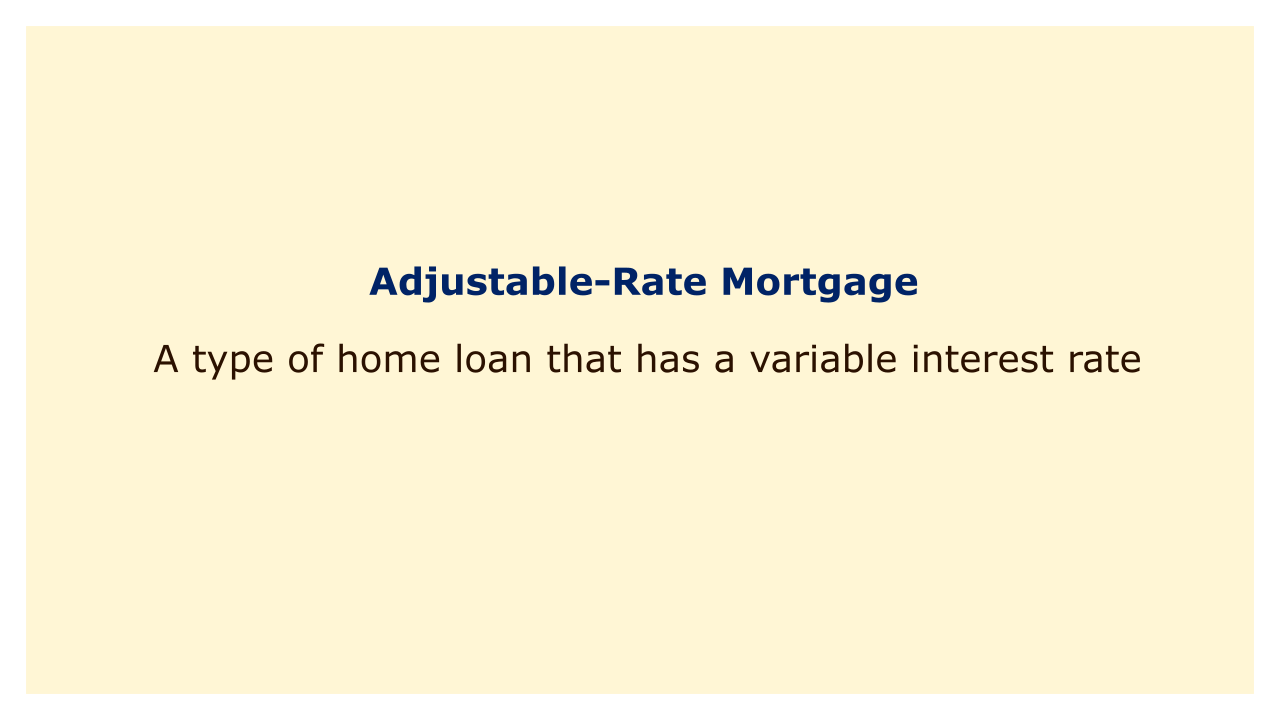 |
| Image: Moneybestpal.com |
An ARM, also known as an adjustable rate mortgage, is a kind of house loan with a fluctuating interest rate. As a result, the rate may alter over time based on the state of the market and the terms of the loan agreement.
Typically, the interest rate is set for a short time, like the first five or ten years, and then it periodically changes based on an index and a margin.
An ARM's key benefit is that it has a lower starting interest rate than a fixed-rate mortgage. It may be simpler to qualify for a loan or to buy a bigger property as a result. The drawback is that the interest rate can rise after the introductory period, which would mean higher monthly payments and greater interest charges overall for the loan.
There are different types of ARMs, each with its own features and risks. Some common types are:
Before choosing an ARM, it is important to understand how it works and compare it with other loan options. Some factors to consider are:
An ARM can be a good option for borrowers who plan to stay in their home for a short time, expect their income to increase in the future, or want to take advantage of low-interest rates. However, an ARM can be problematic for borrowers who cannot afford larger payments in the event that the rate rises, do not comprehend how the loan functions, or do not have a backup plan in place in case their circumstances change.
An ARM's key benefit is that it has a lower starting interest rate than a fixed-rate mortgage. It may be simpler to qualify for a loan or to buy a bigger property as a result. The drawback is that the interest rate can rise after the introductory period, which would mean higher monthly payments and greater interest charges overall for the loan.
There are different types of ARMs, each with its own features and risks. Some common types are:
- Hybrid ARMs: They feature an initial fixed interest rate that is then followed by a variable interest rate that changes annually or semiannually. For instance, a 5/1 ARM has a fixed rate for the first five years, after which it changes annually.
- Interest-only ARMs: They enable the borrower to pay just the interest part of the loan for a predetermined amount of time, such as 10 years, before switching to paying both principal and interest for the remaining term. Initial monthly payments may be cheaper as a result, but later on, they may rise dramatically.
- Payment-option ARMs: They offer the borrower a variety of monthly payment options, including a minimum payment, an interest-only payment, or a payment that fully amortizes the debt. If the minimum payment is insufficient to cover the interest owed, negative amortization occurs, which causes the loan balance to increase over time rather than decrease.
- Balloon ARMs: They feature a sizable lump sum payment due at the conclusion of the loan period, which can be 5 or 7 years. Before the balloon payment is due, the borrower might have to refinance or sell the house.
Before choosing an ARM, it is important to understand how it works and compare it with other loan options. Some factors to consider are:
- The initial interest rate and the duration of the loan
- The regularity and magnitude of rate changes
- The index and margin that were employed to calculate rate changes
- The caps or maximum rate changes allowed at each adjustment and throughout the loan's life
- The different methods of payment and how they impact the principal balance and interest rates
- Prepayment fees or penalties for early loan repayment
- The opportunity to convert or go from a variable-rate loan to one with a fixed rate
An ARM can be a good option for borrowers who plan to stay in their home for a short time, expect their income to increase in the future, or want to take advantage of low-interest rates. However, an ARM can be problematic for borrowers who cannot afford larger payments in the event that the rate rises, do not comprehend how the loan functions, or do not have a backup plan in place in case their circumstances change.
